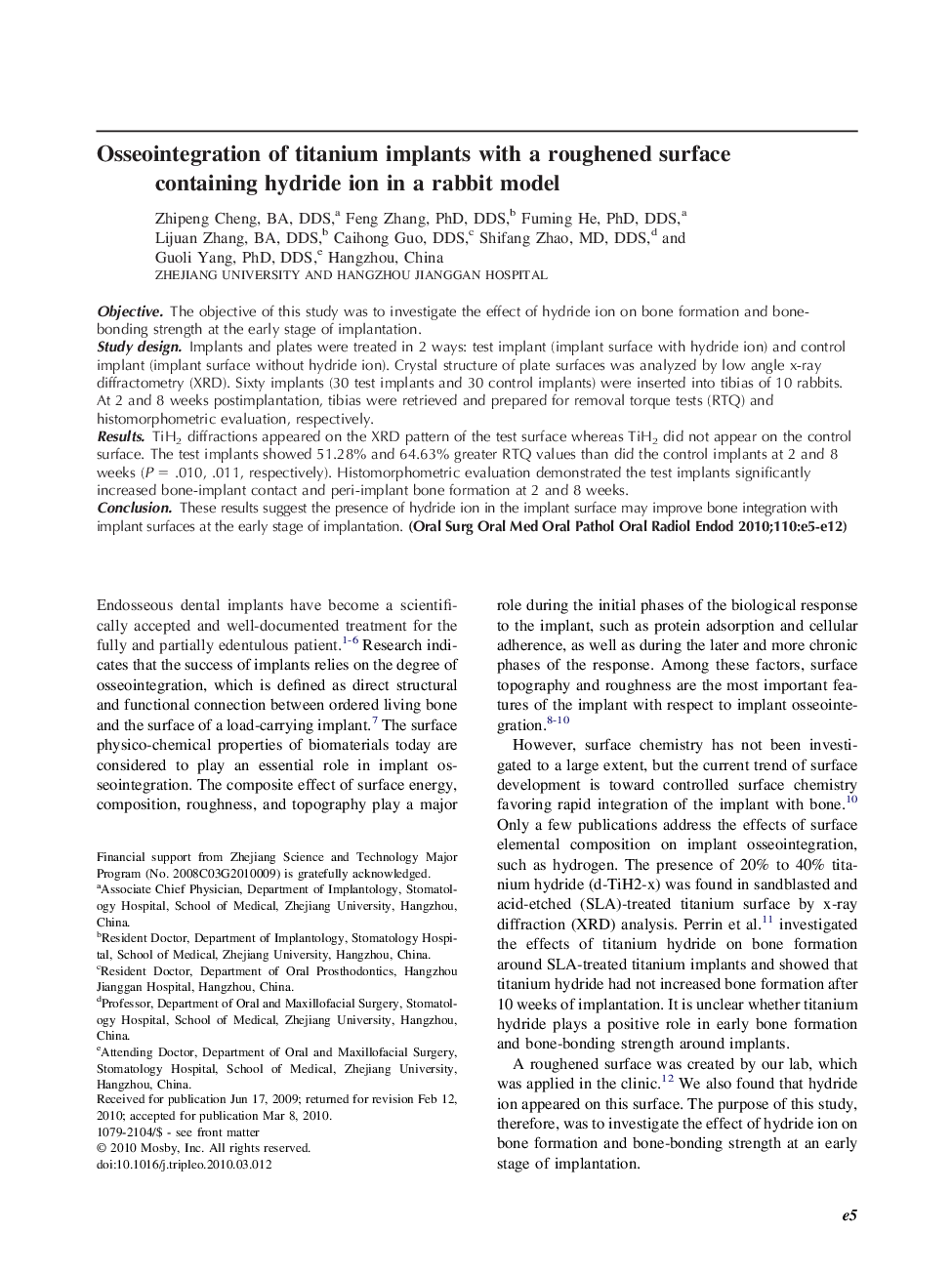| Article ID | Journal | Published Year | Pages | File Type |
|---|---|---|---|---|
| 3167547 | Oral Surgery, Oral Medicine, Oral Pathology, Oral Radiology, and Endodontology | 2010 | 8 Pages |
ObjectiveThe objective of this study was to investigate the effect of hydride ion on bone formation and bone-bonding strength at the early stage of implantation.Study designImplants and plates were treated in 2 ways: test implant (implant surface with hydride ion) and control implant (implant surface without hydride ion). Crystal structure of plate surfaces was analyzed by low angle x-ray diffractometry (XRD). Sixty implants (30 test implants and 30 control implants) were inserted into tibias of 10 rabbits. At 2 and 8 weeks postimplantation, tibias were retrieved and prepared for removal torque tests (RTQ) and histomorphometric evaluation, respectively.ResultsTiH2 diffractions appeared on the XRD pattern of the test surface whereas TiH2 did not appear on the control surface. The test implants showed 51.28% and 64.63% greater RTQ values than did the control implants at 2 and 8 weeks (P = .010, .011, respectively). Histomorphometric evaluation demonstrated the test implants significantly increased bone-implant contact and peri-implant bone formation at 2 and 8 weeks.ConclusionThese results suggest the presence of hydride ion in the implant surface may improve bone integration with implant surfaces at the early stage of implantation.
